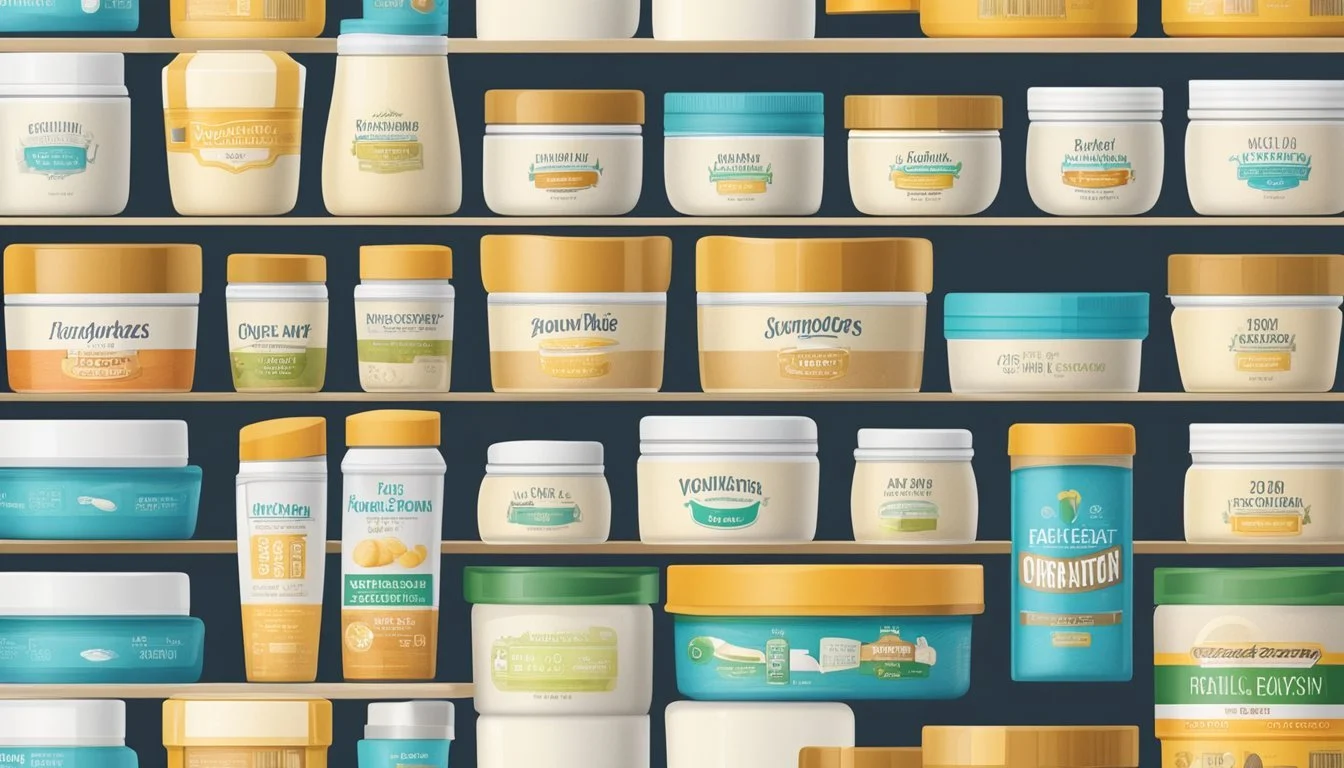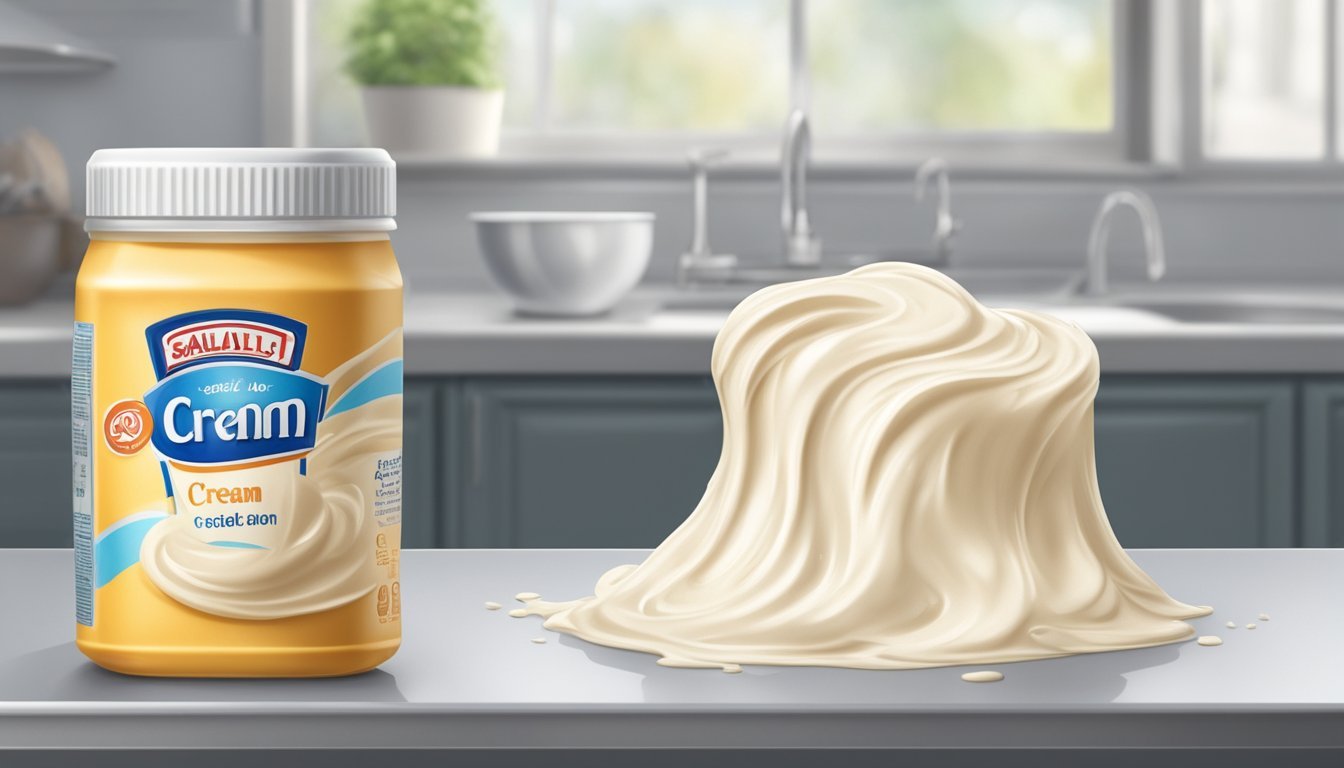How Long Does Cream Last?
Shelf Life and Storage Tips
Storing dairy products properly is essential for maintaining their freshness and ensuring they're safe to consume. Heavy cream (how long does cream last?), known for its rich flavor and versatile use in cooking and baking, often prompts questions regarding its shelf life. After opening, heavy cream generally retains quality for up to a month when refrigerated. This durability can be attributed to its high fat content, which ranges between 36% and 40%, serving as a natural preservative that delays spoilage.
Consumers should note that the shelf life of heavy cream can also depend on various factors, including the type of cream, processing methods, and adherence to consistent refrigeration. While some might expect cream to spoil shortly after opening, proper storage in a consistently cold refrigerator environment can significantly extend its usability. Indicators that heavy cream has gone bad include the presence of mold, a sour odor, or a change in texture.
When considering shelf life, it's also crucial to distinguish between different types of cream. For instance, the shelf life of light cream or half-and-half will differ from that of heavy cream. As these products vary in milk fat content, their propensity to spoil can also vary. As with any dairy product, consumers should exercise caution and inspect their cream for signs of spoilage before use.
Understanding Cream and Its Varieties
Cream, a versatile dairy product, comes in several forms each with unique fat content and culinary uses. Its longevity varies based on its variety and storage practices.
Types of Cream
Heavy Cream: Also known as heavy whipping cream, contains about 36-40% milk fat and is the richest in terms of fat content.
Whipping Cream: Slightly lighter than heavy cream, typically has 30-36% fat and can still hold its form when whipped.
Half-and-Half: A mixture of milk and cream, it's lighter with a fat content ranging from 10 to 18% and is commonly used in coffee.
Light Cream: With 18-30% milk fat, this cream is often used in soups and sauces.
Each type is suitable for different culinary techniques, from adding richness to coffee to creating fluffy whipped toppings.
Fat Content and Grading
The fat content in cream determines its grading and how it can be used in cooking:
Type of Cream Fat Content Heavy Cream Approximately 36-40% Whipping Cream Approximately 30-36% Light Cream Approximately 18-30% Half-and-Half Approximately 10-18%
Higher fat creams like heavy cream are graded higher due to their capability to be whipped into stable forms and provide a richer flavor. Lower fat options like half-and-half are graded for their versatility and lighter consistency, often preferred for beverages or less rich dishes (What wine goes well with rich dishes?).
Shelf Life Fundamentals
Understanding the shelf life of cream is crucial for maintaining its freshness and edibility. Key factors including temperature and whether the cream is opened or unopened will dictate the duration for which it remains suitable for consumption.
Expiration Date
The expiration date on a container of cream is the manufacturer’s estimate of when the product will likely start to decline in quality. For heavy cream, this date generally allows for:
Unopened heavy cream: Up to one month in the refrigerator.
Opened heavy cream: Approximately one week in the refrigerator.
Factors Affecting Shelf Life
The shelf life of cream is impacted by several specific factors:
Type of Cream: Ultra-pasteurized varieties tend to last longer than pasteurized ones.
Temperature: Cream should be stored between 35°F and 40°F. Fluctuations in temperature can shorten its shelf life.
It's important to store cream in the coldest part of the refrigerator, usually the back, to maintain consistency in temperature. A constant, appropriate temperature is vital to preserve the integrity of the cream beyond its printed expiration date.
Proper Storage Techniques
Proper storage techniques extend the shelf life of cream and maintain its quality. Temperature control and airtight sealing are crucial for both refrigeration and freezing methods.
Refrigeration
Cream should be stored in the refrigerator at a temperature between 35°F and 40°F (1.7°C and 4.4°C). The back of the refrigerator is the coldest part, making it the ideal spot for storage to ensure consistency in temperature.
Optimal Refrigeration Temperature: 35°F - 40°F (1.7°C - 4.4°C)
Best Storage Spot: Back of the refrigerator
Freezing Cream
Freezing cream can be effective for extending its shelf life, although it may alter the texture, making it less optimal for some uses.
Freezing Tips:
Freeze in small quantities, such as in ice cube trays, for easier thawing and use.
Thaw in the refrigerator and use promptly.
Texture Changes:
Expect a change in consistency once thawed, suitable for cooking or baking, but not for whipping.
Airtight Containers
Using airtight containers is essential to protect cream from absorbing other flavors in the refrigerator or freezer and to minimize the exposure to air which can spoil the cream faster.
Refrigerator Storage: Store in the original carton or an airtight container and place in the coldest part of the refrigerator.
Freezer Storage: Use airtight containers or freezer-safe bags, labeled with the date of freezing.
Signs of Spoilage
When detecting spoilage in heavy cream, both visual cues and changes in scent and taste are key indicators. It’s important to assess these aspects before using heavy cream to ensure food safety.
Visual and Texture Changes
Heavy cream shows distinct visual signs when it spoils. It may develop:
Lumps: Originally smooth liquid starts to clump together.
Curdle: Separation of liquid into thick parts (curds) and watery parts (whey).
Mold: Green, blue, or white fuzzy spots should not be present.
The texture should be consistent and creamy. If the surface exhibits a crusty film or appears oxidized, this is evidence of spoilage.
Odor and Taste
Spoiled heavy cream emits a distinct sour smell, akin to that of sour milk. This off-putting aroma is a clear signal that the cream should not be used. To confirm spoilage, one can cautiously assess the flavor, although it is not recommended to taste cream if spoilage is suspected. Cream with any sort of off-flavor or sourness should be discarded.
Using Cream in Cooking and Baking
Cream is versatile in the culinary world, enhancing both the texture and flavor of dishes. It is a staple in desserts, soups, sauces, and more, lending richness and a smooth consistency.
Incorporating Cream in Recipes
They often use cream to add a velvety texture and rich taste to various recipes. In baking, it contributes to the tender crumb of cakes and pastries. Cooks may use it in soups to add creaminess without overpowering the dish's main ingredients. Sauces benefit from cream by becoming thicker and more luxurious. When making desserts, such as custards (how long do custards last?) or ice cream, cream is integral for its smooth, luscious quality.
Cream as a Substitute
Cream can serve as a substitute for milk or other liquids in recipes to achieve a denser and richer result. Here are specific substitution guidelines:
In Soups: Use heavy cream instead of broth for a thicker texture.
In Baking: Replace milk with equal parts of cream for a richer, more indulgent dessert.
For Sauces: Cream can replace yogurt or sour cream to achieve a similar tang with a creamier feel.
When substituting, one should note the fat content to ensure the dish maintains its desired consistency.
Health and Safety Considerations
In considering the shelf life of cream, it's crucial to focus on two main areas that impact health and safety: food safety protocols and the effects of pasteurization on bacteria levels. Proper understanding and adherence to these considerations ensure that cream remains safe to consume.
Food Safety
Food safety is a paramount concern when it comes to dairy products like cream. The FDA recommends that consumers follow these critical guidelines:
Always check
expiration dateson packaging before purchase and consumption.Refrigerate cream promptly after purchase and keep it at a constant temperature of 40°F or below to minimize the risk of bacterial growth.
Avoid leaving cream out at room temperature for extended periods, as temperatures above 40°F can lead to rapid bacterial contamination and increased risk of foodborne illness.
Discard any cream that shows signs of spoilage, such as off odor, discoloration, or curdling.
Pasteurization and Bacteria
Pasteurization plays a vital role in ensuring the safety of dairy products, including cream. Here's how:
Pasteurization involves heating cream to a specific temperature for a set time to kill harmful bacteria.
Even after pasteurization, it's essential to maintain strict hygiene practices to prevent recontamination.
Ultra High-Temperature (UHT) pasteurized creams have a longer shelf life compared to traditionally pasteurized creams due to the higher temperatures used, which provide additional sterilization.
Despite the thorough process, consumers should consume pasteurized cream within the recommended time frame and adhere to safe handling practices as bacteria like Listeria monocytogenes can survive and grow even at refrigeration temperatures if given the chance.
Maximizing Freshness and Usage
To preserve cream's freshness and extend its usability, one must adhere to best storage practices and understand its inherent shelf life. The following tips will help maintain the quality of cream while also providing creative ways to use it as it approaches expiration.
Consuming Within Shelf Life
Heavy cream can last up to one month after opening if stored correctly in the fridge at a consistent temperature between 32°F (0°C) and 40°F (4°C). It is important to check the expiration date on the package, as unopened heavy cream typically remains fresh for about 2 to 3 weeks while refrigerated. To avoid spoilage, store cream away from the fridge door and instead opt for a spot in the main body of the fridge where the temperature is more stable.
Freshness Tip: Always return the cream to the fridge as soon as possible after use to maintain its quality.
Shelf Life Indicator: Monitor any changes in texture or smell as these are clear signs that the cream is no longer at its peak freshness.
Creative Uses for Near-Expiration Cream
When cream nears its expiration date, it can still be used creatively in various culinary applications:
Sour Cream Substitute: Add lemon juice or vinegar to near-expiration heavy cream to create a homemade sour cream for dips and toppings.
Butter Making: Shake heavy cream in a jar until it separates into butter and buttermilk, which can be used for cooking or baking.
Ice Cream Base: Use heavy cream to make a rich, decadent homemade ice cream.
Enhanced Whipped Cream: Sweeten and whip the cream to top desserts like pies and strawberries, giving them an indulgent twist.
Flavor Infusions: Infuse the cream with herbs or spices to add complexity to sauces or soups.
By understanding cream's shelf life and different ways it can be utilized, one can effectively maximize both freshness and usage, reducing waste and enjoying the myriad culinary possibilities cream offers.






